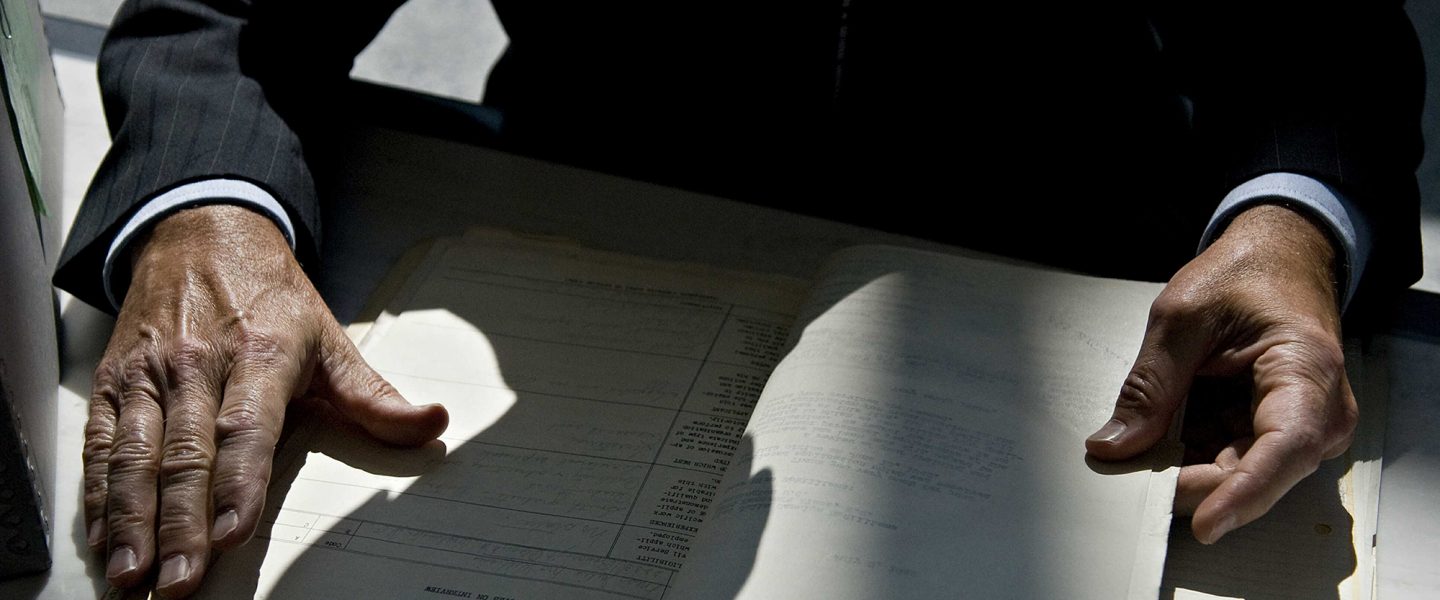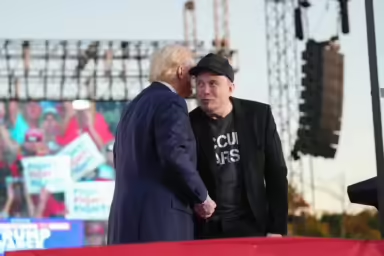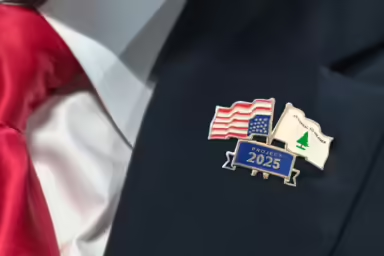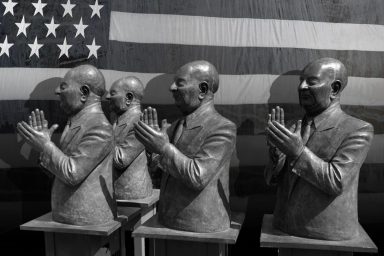The truth may be hiding in plain sight, but proving it can require meticulous parsing of massive amounts of seemingly obscure information. That’s why we need to understand the National Archives.
|
Listen To This Story
|
As someone who has investigated and written for many years about the activities — some not very commendable — of the intelligence community, I feel it is important to acknowledge that not everything in this shadowy world is as nefarious as one might conclude.
It’s easier — and, truth be told, more satisfying and fun — to tar such institutions with a broad brush, but the reality is more complicated and more nuanced. In fact, that’s one of the guiding principles behind the journalism we practice at WhoWhatWhy.
And so it is with the JFK assassination records that have been released in fits and starts over the last quarter-century, with the latest, and purportedly final, batch out last December 15.
Ultimately, I guess what we all want to know is: What about the stuff showing how places like the CIA actually operate, material that gives us an inside peek into the spying, the sabotage, the blackmail, the murders — all the stuff we see in the movies? Where are those documents?
I recently had a long chat with William Bosanko, chief operating officer at the National Archives and Records Administration (NARA), the federal agency that serves as record keeper of all documents and materials created by the US federal government.
Bosanko, who started at the bottom around the time the JFK Records Act was passed in 1992 and worked his way up over the years, struck me as an ideal public servant, and typical of the many high-caliber individuals in the frequently-derided federal bureaucracy. He clearly loves his work, and is genuinely dedicated to the goal of preserving and making available the materials that document the public — and not-so-public — history of the country and its policies.
Ultimately, I guess what we all want to know is: What about the stuff showing how agencies like the CIA and FBI actually operate, material that gives us an inside peek into the spying, the sabotage, the blackmail, the murders — all the stuff we see in the movies? Where are those documents?
So I asked Bosanko to shine a light on the more arcane aspects of the JFK records, seeking to understand how government agencies decide what to release, what processes exist to ensure that material of public interest is not unduly withheld, why some things remain blacked out, why some documents have never been released, and even the fundamental but rarely asked question: What exactly is a “JFK assassination record?”

The following is an amalgam of what the NARA official told me in response to my questions (bulleted), and, more often, my own understanding of some murky and complex matters based on my personal analysis or perceptions. Any errors or misconstruals are my fault, and I’ll do my best to correct them in the future.
- Why won’t NARA pressure agencies to release additional documents?
Bosanko explained that aggressively looking for and demanding documents from other federal agencies is simply not part of NARA’s mandate, and, moreover, NARA was never given the resources it would need to fulfill that task. Others disagree, and the Archives are currently being sued in an effort to pry loose documents that have never been released but are believed to exist. In the meantime, NARA says that outside groups and individuals should feel free to go after the individual agencies directly, and try to force them to release any documents in question.
- Why, after all these years and releases, are some small number of records still not available for public view?
Pretty much everything identified for release has been released. The exceptions are supposed to fall under laws not related to JFK, such as documents containing tax information or grand jury testimony.
- Who in the government is in charge of investigating what really happened to Kennedy?
Actually, no one. The Assassination Records Review Board (ARRB) of the 1990s was the last entity charged with helping investigate JFK’s murder. More specifically, however, it was charged with carrying out the Congressionally-passed JFK Records Act by identifying documents that might relate to the assassination and working to get those released to the public.
Since the ARRB was disbanded, there is no authority within the government to take that further. And even the ARRB was not really dedicated to “solving” the murder, only to getting relevant paperwork released.
The very fact that no one is tasked with this historically weighty “cold case” is in itself quite sobering. It puts the entire burden on private citizens.
If anyone does see anything especially hair-raising, they will have the common sense to alert a superior, and eventually someone at a high level will have the savvy to make sure various authorities will consider a range of implications and consequences in letting a live one go.
- Could there still be a cover-up all these years later? If so, how would it work? If not, then what explains the seeming continued obstruction of information releases?
The vast majority of people with a direct personal stake in hiding anything related to Kennedy’s death would be dead by now. And I cannot grasp how some dominant clique in an agency like the CIA or FBI would be able to bureaucratically justify (or necessarily care enough) to resolutely ward off disclosures on long-ago events.
More likely, nondisclosure could be on autopilot: enough rules are already baked in for those agency employees tasked with specific roles, like document review or legal oversight. Just doing their jobs will automatically prevent certain things from coming to light.
Furthermore, if anyone does see anything especially hair-raising, they will have the common sense to alert a superior, and eventually someone at a high level will have the savvy to make sure various authorities will consider a range of implications and consequences in letting a live one go. And, truth be told, how often has any institution, public or private, voluntarily aired really filthy laundry? It’s just not done.
- What actually is an “assassination record?”
Oddly, I don’t remember anyone ever bringing this up. But of course, if you’re expecting the government to release all assassination records, you do need clarity on what those are — and aren’t.
According to the Act, those records consist of all US government records relating to the assassination, including “any materials created or made available for use by, obtained by, or otherwise came into the possession of any state or local law enforcement office that provided support or assistance or performed work in connection with a federal inquiry into the assassination.”
Since no government agency is admitting to any kind of culpability or prior awareness of a plot against the president, or any role in any subsequent cover-up — nor, more importantly, ever made any good faith effort to get at the truth, why would they even have anything that might come under this heading?
It seems that what is determined to be relevant by the agencies, and therefore must be released, is based on something unfathomable and subjective, and ultimately, deeply inadequate to the expressed aim of discovering the truth.
Of course, various government entities did “investigate,” and there were internal files labeled as relating to the assassination. For example, anything they found on Lee Harvey Oswald, Jack Ruby, and so forth. Plus anything the ARRB or NARA may have decided should be included — like, recently, anything about Mexico City. (Controversy continues to rage over whether Oswald went there in the summer of 1963 and interacted with Soviet and Cuban diplomats while purportedly seeking permission to return to the USSR.)
***
The basis for “national security” exemptions is quite interesting. One thing that concerned the government was avoiding disclosures regarding foreign governments and agencies that cooperated with secret surveillance by the CIA in their countries. Foreign partners only agreed to these arrangements because of guarantees that such apparent violations of their sovereignty would never become public. These foreign governments worried that such activities could spark tremendous uproar, even decades later.
So sometimes, what might look like agencies protecting themselves turns out to be something entirely different.
For its part, NARA seems to do quite a good job of demanding that the agencies explain the particulars of anything they want to withhold, to good effect. Its senior officials can get access to the original unredacted documents and press for explanations on why they should not release them in whole. And this has led to progress. For example, with the most recent release, the CIA did not withhold material that it has in the past — relating to the actual locations of its foreign stations. (That’s not considered germane to the JFK assassination, but we get the information and it has research value.)
***
People ask me all the time whether I think the truth will be revealed by documents. No, not directly. No “smoking gun” exists that one can discover and wave in front of others to make a definitive point.
Why no smoking gun? Maybe it went up in smoke. But seriously, consider some of the many obstacles we truth-seekers face:
- The most sensitive and controversial activities and operations are highly compartmentalized on a “need to know” basis, so very few people know the truth firsthand.
- In highly sensitive activities, little is ever written down.
- Spy agencies worldwide do all kinds of things that can never be acknowledged. There is no record, and precious little institutional awareness. You know the term: “deniability.”
- Typically, efforts to find specific documents that are known or likely to have existed come up dry. This may be simply because those documents were destroyed a long time ago. Document destruction is a real thing, and we’ve seen examples recently, including the Secret Service’s destruction of text messages from the Trump administration.
- Agency personnel are sworn to secrecy, and also wired in such a way that they would never even consider revealing confidences about their work, no matter what. This is quite common in military and paramilitary organizations. In addition, a host of punitive measures and threats lurk for those who break these confidences. The well-publicized instances where insiders met untimely deaths have not been lost on their colleagues.
Yet, despite all this, we have many reasons to be hopeful. For one thing, intrepid, resilient, eagle-eyed researchers armed with broad knowledge can still mine for gold.
Sometimes you find something really great. For example, some years back, at WhoWhatWhy, we reported on a document about Earle Cabell, the man who was the mayor of Dallas at the time of JFK’s fateful visit to that city, and who played a role in trip arrangements and logistics. The document showed that Cabell, a businessman who ran, among other things, a large family-owned dairy, had been approved some years earlier for operational use by the CIA.
That becomes even more interesting when one considers that Cabell’s brother, Gen. Charles Cabell, was the deputy director of the CIA, and was fired along with his boss Allen Dulles by President John F. Kennedy. Charles Cabell was known to speak somewhat openly about his animus for the president.
Typically, though, it is the much smaller things that one comes across, and we researchers absolutely geek out on matters that would mean nothing at all to most people. Like noticing an itinerary that puts a person of interest in a place other than where they were officially said to have been.
Those little gifts can lead to embarrassment — or worse — for the powers that be.
Indeed, some years ago, an Obama administration official sent a memo warning about the risk of releasing documents. He referred to the “mosaic effect” — that it is still possible to stitch together seemingly meaningless or obscure items to generate a larger picture, even leading to a major breakthrough. That’s the sort of hard, typically unsung and definitely underappreciated work that is the basis of the finest journalism and scholarship.
Today, while we tend to glorify the self-appointed narrators of history, the summarizers of and opiners on others’ work; it is those laboring assiduously over research projects for long periods in relative or even total obscurity who deserve our greatest appreciation.
And in that regard, a bit of good news for researchers: NARA’s holdings include 25 million cubic feet of paper from other agencies; only a portion of which is classified. Just 1 percent of that trove is digitized. But NARA requested, and Biden has agreed, to commence digitizing the entirety of the JFK collection, and that is underway. The goal is to get all of the JFK records digitized and available online this year.
***
I was thinking about all the work these taxpayer-funded public servants are doing as I pondered some of the mystifying anomalies and inconsistencies arising with each new batch of released documents over the years.
Often, the discrepancy can be explained by the exigencies of work.
For example, I was wondering why, in the December 15, 2022, release, many “redactions” (or blacked out sections) were accompanied by a citation of the relevant section of the JFK Records Act. These are the justifications — the reasons the government says it can continue to withhold information. I didn’t recall seeing these line by line certifications with prior records releases. What gives, I wondered?
The answer is simply that with past releases, NARA staff had just too much paper to push through and too little time, and so these exemptions were essentially mass-applied to many documents at a time. Putting the specific explanation on every single redaction in the latest release represents a public service that only sufficient time and staff made possible.
This boon to future researchers, this herculean task being performed — at a time when the House GOP is proposing massive cuts in federal bureaucracy, starting with the IRS — is a reminder of a rarely appreciated side of bureaucratic endeavors. That is the value of employing people to do hard and often thankless work to help US citizens understand their own government.
# #
The nonprofit Mary Ferrell Foundation digitizes government documents related to the JFK assassination and other topics, and you can find searchable records there.




